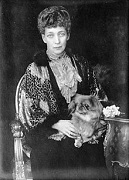Marginal gains and morality – and an error
Today I would like to draw the attention of Rust readers to an article on the use of TUEs (therapeutic use exemptions) in professional cycling – the perhaps most notorious example being that involving a package containing ‘nobody knows what’ that was sent for the use of Sir Bradley Wiggins in the era in which he won the Tour de France, all records and recollections of which have seemingly mysteriously disappeared (in the peculiar case of British Cycling’s Dr Richard Freeman due to a stress-related illness or condition) – written by Richard Williams which appears today upon the website of – see here – THE GUARDIAN
 A worthy addition, I would suggest, to the discussions regarding both the use of performance-enhancing drugs in sport and the general state of British sport’s governing and administrative organisations – their funding of athletes, treatment of athletes and sundry allegations of bullying, sexual abuse/harassment and sheer incompetence or dodgy practices.
A worthy addition, I would suggest, to the discussions regarding both the use of performance-enhancing drugs in sport and the general state of British sport’s governing and administrative organisations – their funding of athletes, treatment of athletes and sundry allegations of bullying, sexual abuse/harassment and sheer incompetence or dodgy practices.
And yet also today I wished to draw Rusters’ attention to a minor ‘error’ in Mr Williams’ article that I spotted immediately because it struck me as standing out like a sore thumb.
I wondered whether our readers can identify it in the following extract from the piece:
‘The “gaming” of TUE certificates raises questions about the whole system of allowing athletes to compensate for temporary or permanent medical conditions. Like the use of replacements in rugby and substitutes in football, or the often flagrantly strategic use of medical time-outs in tennis, TUEs are capable of distorting sport in ways that should arguably be seen as unacceptable.
Shouldn’t endurance – and its consequence, exhaustion – be an intrinsic part of sports like these? Human frailty has always been part of the appeal of sport to the spectator, from the collapse of Dorando Pietri at the end of the 1908 Olympic marathon at White City, which so moved the watching Queen Victoria, to Venus William’s disastrous 0-6 second set against Garbiñe Muguruza in this year’s Wimbledon final, which may or may not have been provoked by the unpredictable and debilitating effects of Sjogren’s syndrome, with which she was diagnosed some years ago.’
Did anyone out there ‘get’ it?
 I only ask because, of course – whilst Dorando Pietri’s collapse and travails upon entering the stadium on 24th July 1908 at the end of that year’s London Olympics marathon still stands as perhaps one of the top ten most famous incidents in the history of the modern Olympics – and indeed the watching Queen was much moved by his plight, the lady concerned could not possibly have been Queen Victoria.
I only ask because, of course – whilst Dorando Pietri’s collapse and travails upon entering the stadium on 24th July 1908 at the end of that year’s London Olympics marathon still stands as perhaps one of the top ten most famous incidents in the history of the modern Olympics – and indeed the watching Queen was much moved by his plight, the lady concerned could not possibly have been Queen Victoria.
Simply because she had died on 22nd January 1901.
 The Queen involved was in fact Queen Alexandra (1844-1925), wife of King Edward VII.
The Queen involved was in fact Queen Alexandra (1844-1925), wife of King Edward VII.
The 1908 Olympic version of the race (decided to be “between 25 and 26 miles”) was originally planned to begin in a Windsor street but was later moved inside the grounds of Windsor Castle so that the Princess of Wales and her children could watch the start.
This adjustment, plus the fact that in the White City Stadium the organisers wanted the finish-line to be in front of the Royal Box for the benefit of the Queen (Alexandra) who for some reason had a particular interest in the marathon, was the cause of the addition of the famous 385 yards that then resulted in the official Olympic marathon distance becoming “26 miles and 395 yards” (still today the only Olympic track and field distance not measured by the metric system).
Previously the marathon distance had been 40 kilometres (24.85 miles) at the 1896 Athens Olympics, then 25 miles at Paris in 1900 and 40 kilometres again at St Louis in 1904.
 According to the fact or legend, when it was announced (after a protest) that Pietri had been disqualified for having been received ‘assistance’ to reach the finishing line, Queen Alexandra was sufficiently sympathetic towards his plight that, at a ceremony the following day, she awarded Pietri the consolation of a small silver cup. Other accounts have it that this was a gold cup.
According to the fact or legend, when it was announced (after a protest) that Pietri had been disqualified for having been received ‘assistance’ to reach the finishing line, Queen Alexandra was sufficiently sympathetic towards his plight that, at a ceremony the following day, she awarded Pietri the consolation of a small silver cup. Other accounts have it that this was a gold cup.
Whichever it was, Pietri turned professional soon after the Olympics – as did John Hayes of America who was awarded the gold medal – and subsequently beat Hayes in two rematches.

